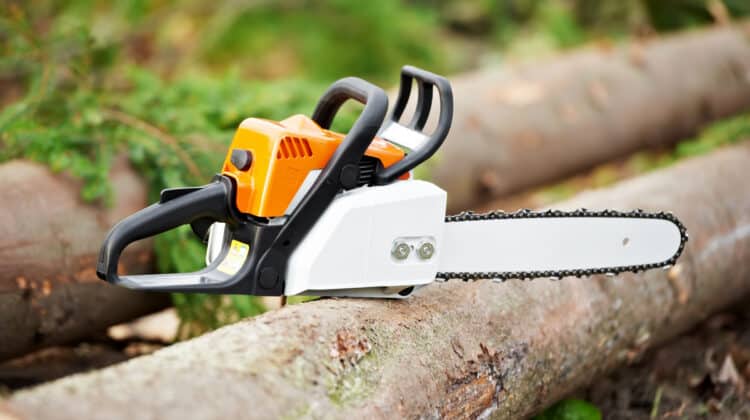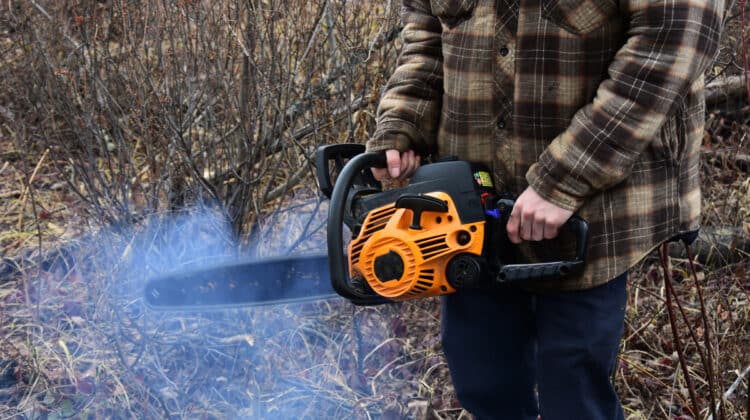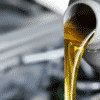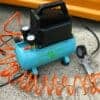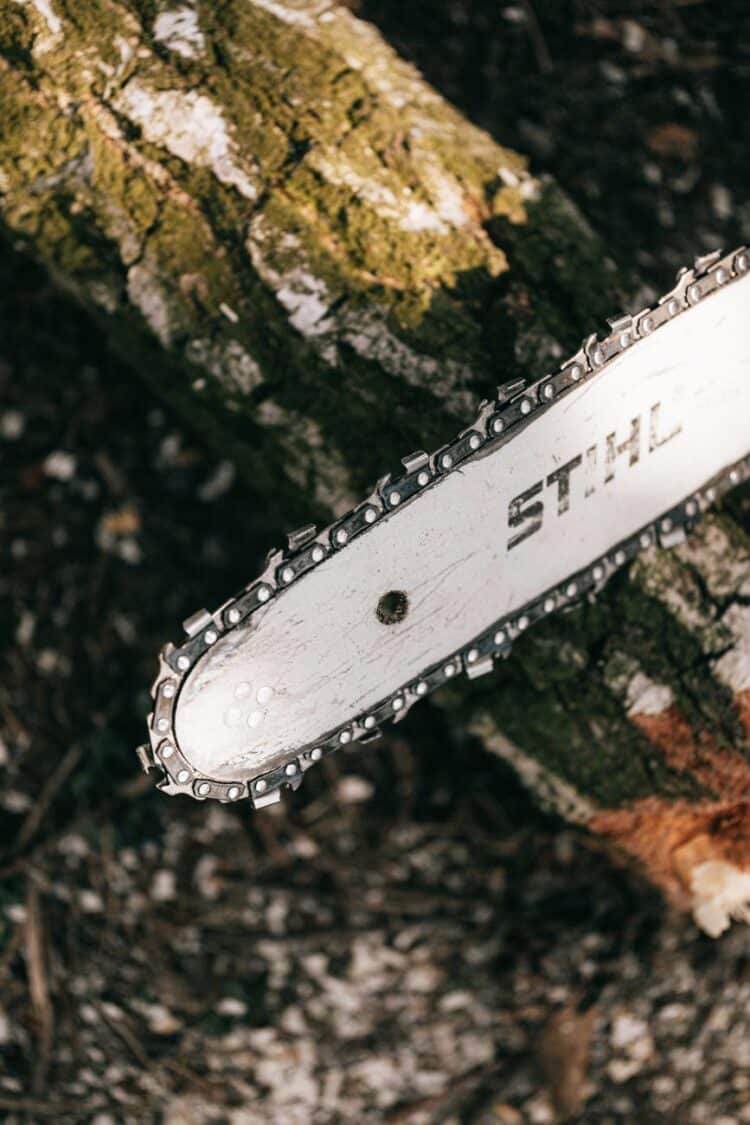
Chainsaws are powerful tools that will cut through just about anything. Like all other tools, wear and tear will take a toll. This happens more quickly if you use your chainsaw every day. While the body of your chainsaw may remain intact, the blade and saw which do the cutting deteriorate with haste. Deterioration sets in faster without proper care. In this article about how long does a chainsaw chain last, we will address the following.
- How long does a chainsaw chain last
- How to care for your chainsaw
- When to repair and replace your chainsaw chain
Now to get started.
Table of Contents
How Long Does A Chainsaw Chain Last
Chainsaw chains are commonly made from a material called steel alloy, which is one of the most durable compounds on earth. And you can understand why these tools need to be tough. They do a lot of hard work. Steel alloy is built to last. Yet, there is no set timeline on the longevity of a chainsaw chain.
But some chainsaws run on the cheaper side. Even so, they will last as long with the best care.
So, to answer your question about how long does a chainsaw chain last; there is no timeline.
How long your chainsaw chain lasts depends on a few things. We will now go through what those are.
Do You Use Your Chainsaw Often
Although there is no real limit to how long your chainsaw will last, a well-used properly maintained chainsaw chain of the best quality will last for up to five or six years. These are the things that will impact how long does a chainsaw chain last.
The Type Of Chainsaw Blade
Chainsaw blades come in a variety of shapes and sizes. They are configured by:
- Pitch
Chainsaw chains are available in a variety of pitch sizes. When we talk about pitch and chainsaw chains, we mean how far apart the drive links are from each other.Why is this important?It is necessary because each pitch size is more suited for one size job than another. Here is an example. A chainsaw with a Pixel .325-inch pitch is not suitable for heavy-duty jobs.
It is not a good idea to use it to fell trees or even large branches. But a ⅜-inch pitch is perfect for this kind of work.
The main takeaway here is, if you use a chainsaw chain with the wrong size pitch, your equipment will suffer wear and tear faster. - Gauge
Gauge means the thickness of each drive link on the chain. The thicker they are, the stronger they will be. - Cutter material
- Cutter style
- Chain arrangement
These configurations combine to form different chainsaw chain kinds.
Each chainsaw chain has unique cutting qualities. Each one is also best suited to specific machines and user ability levels.
It is in the interest of the chainsaw user to determine which chainsaw chain composition is best for them.
Signs You Need To Replace Your Chainsaw Chain
There will come a time when your chainsaw chain can no longer be sharpened. Oiling it will no longer have the desired effect. At this point, you need to consider replacing the chain.
These are the signs of which you need to be aware.
Your Chainsaw Has A Hard Time Staying In Position
A well-maintained chainsaw should remain steady when placed against the material you want to cut. But, if your chain needs to be switched out, you will notice the saw cannot stay still. Instead, it bounces and rattles.
A shaky saw indicates that the chain has outlived its usefulness and poses a safety risk, so you should replace it with all haste.
The Chainsaw Does Not Pull Itself Through The Wood Anymore.
Owning a chainsaw presents the user with a number of advantages. One of the good things about a chainsaw is it is an efficient piece of equipment. Another benefit is that it needs a user whose hands are steady instead of strong.
A steady hand will keep the chainsaw stable. Once you set the chainsaw against the object you want to cut, it should begin pushing its way through. If you have to actively press the chainsaw to keep it steady and guide it through the object, that is a sign the chain needs replacement. It means the chain has lost the ability to do the one job that makes it an efficient tool.
The chainsaw should make your job easier.
It is supposed to make your job effortless.
You should not have to exert that much force for it to do the work.
If this is the case, you need to replace the chain to avoid causing injury to yourself.
The Chainsaw Chain Makes Smoke When You Use It
If your chainsaw chain is well-lubricated and has the correct chain tension and smoking occurs, something is wrong.
Whenever smoke is present while operating a chainsaw, it is the result of poor lubrication. Sometimes it may be because of bad tension. The chain is too tight. These problems cause the bar to overheat. The excess heat and increased friction will stretch the chain.
But if you examine your chainsaw and these are not the culprits, then the problem could be the chain’s health. If your chainsaw chain is dull, it can also cause overheating. Overheating can also stretch the chain and render it useless. Do not use your chainsaw if the chain is dull.
Anytime you suspect the chain on your equipment has a problem, you should try to rectify it right away. Safety is of the utmost importance when handling all power tools.
Besides avoiding injury, changing a faulty chain ensures the work you need to complete gets done the right way.
You can tighten a stretched chain if there are no other issues. The chain should continue working well. You can also loosen the chain if it is too tight and prevent smoking.
Your Chainsaw Chain Makes Cuts That Are Crooked
You will notice your chainsaw chain has reached the end of its useful life when the cutting direction grows more jagged and crooked. You will not have a clean finish. If you notice this problem, it means the chain’s cutting teeth are dull. Dull teeth cannot make nice, smooth lines.
You can sharpen the teeth of the chain to get it back into shape, but you can only do this so many times. There will come a day when sharpening will not work. Most times, the best option is replacing the chain.
Chainsaw users should always inspect and service their tools. These inspections should take place after every fifteen hours of use. One of the things you want to look for is missing teeth or teeth that are damaged. There is not a more sure sign of deterioration.
You can get away with sharpening and resharpening dull teeth a few times. But there is nothing you can do about missing teeth on a chainsaw. And chipped, broken, or off-center teeth are harder to deal with.
These are not problems that sharpening can fix. If a tooth becomes compromised, you should stop using the chainsaw until you get the entire chain.
Missing teeth on a chainsaw chain is not always dangerous, but they can be. They can also mess with your finished work. They are also a sign that you need to replace the chain to avoid problems in the future.
You Have Reached The Safety Lines On Your Chainsaw
Chainsaw guides and cutters have little lines stamped into them. If you look close enough, you will see them. These lines show how far you can sharpen the blade.
If you sharpen a chain beyond those lines, it may fall apart or even zing off the chain while it is in use. Chainsaw chains move at such high speeds. They can cause serious injury.
Get Your Chainsaw Serviced
If you own tools and appliances, the best kind of service you can give them is preventative care. That is the only way to get your equipment to last a long time and work well. You have to stay ahead of aging issues and issues caused by frequent use. Preventative maintenance is, in most cases, less expensive than dealing with the cost and inconvenience of a component failure or equipment breakdown.
I mentioned it earlier, but I will say it here again. You should give your chainsaw a once-over after every fifteen hours of use. Examine the chain to ensure that it suffered no damage. And at least once a year, give your chainsaw a thorough service. If you cannot do it yourself, you can always take it to a professional.
If you follow these guidelines, your chainsaw, including the chain, will stay healthier longer.
Things That Can Damage Your Chainsaw Chain
Even if chainsaws have the ability to slice through rocks and metal, the chains were made for cutting wood. Using your chainsaw to cut through rock, metal, and other material can cause wear and tear to happen faster.
Hitting Rocks
You may not intend for this to happen, but when cutting trees or shrubs close to the ground, the chain can come into contact with dirt, pebbles, or larger stones. Keep in mind that dirt will dull the cutters in a matter of seconds, which has a significant impact on the efficiency of your tool.
Hitting Nails
In a lot of cases, trees in your yard are used to help with putting up fences. You want to remember that there may be nails hiding in the trees. If you decide to cut down those trees, you need to find the nails, so your chainsaw chain will not make contact with them.
At the speed at which they revolve, a chainsaw cutter will cut through nails. But that speed can also cause the teeth to chip, break, dent, or move out of place.
Improper Lubrication
I mentioned lubrication earlier. Keep your chainsaw blade oiled to prevent overheating. Remember, overheating can stretch out and loosen the chain. Without the proper tension, your chainsaw will not work the way it should.
But, proper lubrication is essential to ensure your chainsaw does not overheat. What do I mean by that?
You may think that it is okay to use any old oil to grease up your chainsaw blade. That is a wrong assumption. Dirty or reused sump oil is not a good option.
Sump oil has been stripped of its viscosity and lubricating properties when it lubed up the engine components. That is why you no longer want it in your engine. The oil is weak and can no longer get the job done. Why do you think it is safe to use on your chainsaw blade?
This oil will also have abrasive contaminants from your engine. These contaminants include carbon and engine particles.
There is chain and bar oil created especially for chainsaw blades and chains. This lubricant is the correct viscosity. It also has a tackifier component that keeps it stuck to the chain. It is not going to slide off while you use the chainsaw.
Chain and bar oil will keep your blade and chain well oiled while you use the chainsaw. It will also help extend the life of your equipment. It is better to use a lubricant meant for chainsaw blades and chains. Doing so will save you money on repairing and replacing the chains.
Rust
Rust eats through metal and weakens it. Your chainsaw will begin showing signs of rust if:
- You do not store it properly
Keep your chainsaw indoors in a place where the elements will not cause damage. Ensure that the place where you store this piece of equipment is not damp. - You do not clean it well or often enough
If your chainsaw is mildly dirty, you can wet a rag, rub some soap into it and use that solution to clean the blade and chain. Do not douse the chainsaw with water.For heavier cleaning jobs, try using a heavy-duty degreaser to break down gunk buildup.For getting in between grooves and teeth, use a tool meant for cleaning grooves. You can also try using a putty knife. - You do not oil it the right way
Besides causing overheating, failing to oil your chainsaw chain can also lead to rust.
Frequently Asked Questions
How Long Should I Wait Before Sharpening My Chainsaw Chain?
There is no waiting period to sharpen the chain on your chainsaw. If you feel the chain is dull and not getting the work done the way it should, you should whet it. Stay attuned to your equipment.
How Many Times Can I Sharpen My Chainsaw Chain?
Although there is no set number of times you can sharpen your chain, you cannot over sharpen them. Keep an eye out for those safety lines I mentioned earlier. Once you have sharpened up to that point, it means it is time to get a new chain.
You do not need to sharpen your chain after every use. And if you do not use your chainsaw often, you will need to whet it even less.
How Can I Sharpen My Chainsaw Chain?
You can sharpen your chains in one of two ways.
- With A File Guide – Using this method, you can sharpen your chainsaw yourself.
- With A Grinder – This method requires a professional touch.
Both these methods have a time and a place. Most likely, you will end up using the file guide more often. You can do it yourself.
But, to be on the safe side, you can give yourself a 5-time rule. After sharpening five times, switch to a new chain.
Here is a tip you can follow.
Try to be careful when you use your chainsaw. Avoid hitting dirt, rocks, and other metals. Doing so can dull the chain, and you will have to sharpen it.
Is There A Reason My Chainsaw Gets Dull So Fast?
It can be exhausting to use a dull chain. But there is no need to worry about this problem as it has an easy solution.
We have a list of reasons your chains dull so fast written below. If you avoid them, you will extend the life of your chainsaw. It will stay sharper longer.
- Using the blade tip to cut dirty wood
- The chain comes in contact with the ground
- Putting the cutters at a sharp angle
- Rakers that are too low
- When sharpening, you use the wrong file size
How Long Does A Chainsaw Chain Last – There Is No Need To Worry.
A dull chainsaw chain is not always a sign that your chain needs replacement. All you may need to do is give it a quick sharpen. But, this part of your chainsaw will not last forever. The more often you use it, the quicker the precision of the tool will wear out.
Wear-and-tear on chainsaw chains and bars are unavoidable and worn-out tools can pose danger to users. Plus, these tools will be less effective. Their cutting capabilities will be significantly reduced and using them becomes exhausting.
If you keep your chain sharp and well greased, you will extend the life of your tool. Rust and hitting metallic or unclean items are the two most important things to avoid with chainsaw use.

